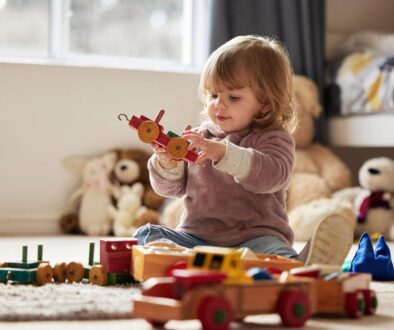Setting Boundaries

Young children are naturally curious and often unaware of potential dangers. Setting boundaries helps keep them safe by establishing limits on activities, environments, and interactions that could pose risks to their well-being. Boundaries teach young children about appropriate behavior in different social contexts. By setting boundaries around sharing, taking turns, respecting personal space, and using polite language, children learn how to interact positively with peers and adults. They provide structure and predictability, which are essential for young children’s emotional development.
Setting boundaries communicates to young children that their needs and feelings are valid, while also teaching them to respect the needs and feelings of others. This mutual respect forms the foundation for healthy relationships and cooperation. Boundaries give young children the opportunity to explore and make choices within safe limits. By setting clear expectations and providing guidance, parents and caregivers empower children to develop independence and decision-making skills. Consistent boundaries help young children learn about cause and effect, as well as the importance of following rules and routines. When boundaries are enforced consistently, children learn to trust the reliability of their caregivers and understand the consequences of their actions.
Here are some effective ways to set boundaries:
- Use language that is age-appropriate and easy for young children to understand. Straightforwardly state the boundary, avoiding long explanations or vague statements.
- Instead of focusing on what children cannot do, positively frame boundaries. For example, say “We walk inside” instead of “Don’t run inside.”
- Children learn by example, so demonstrate the behavior you expect from them. If you want them to use polite words, be sure to model polite language yourself.
- Consistent routines provide structure and help children know what to expect. Establish routines for meals, bedtime, and transitions, and communicate boundaries within these routines.
- Clearly communicate the consequences of crossing a boundary. Make sure the consequences are appropriate and related to the behavior and follow through consistently.
- For younger children or those who respond well to visual prompts, use pictures or charts to represent boundaries and routines. Visual cues can help reinforce verbal instructions.
- Provide children with limited choices within the boundaries you’ve set. This gives them a sense of control and autonomy while still respecting the established limits.
- Reinforce adherence to boundaries with praise and positive reinforcement. Acknowledge when children follow the rules and express appreciation for their cooperation.
- Young children are still learning and may test boundaries as part of their development. Stay calm and patient and be prepared to redirect their behavior as needed.
Every child is unique, so be flexible in your approach to setting boundaries. Pay attention to each child’s temperament, developmental stage, and specific challenges, and adjust your strategies accordingly. By using these strategies consistently and with patience, parents and caregivers can effectively set boundaries that promote positive behavior and healthy development in young children.





